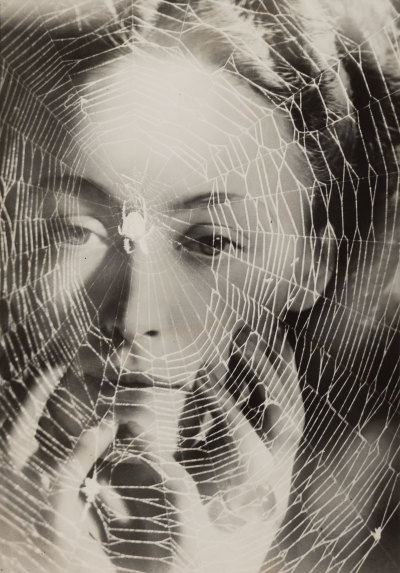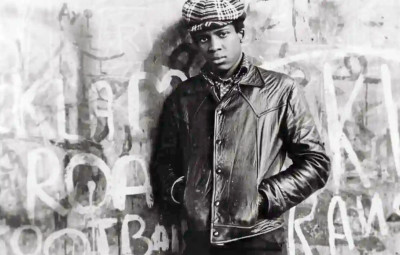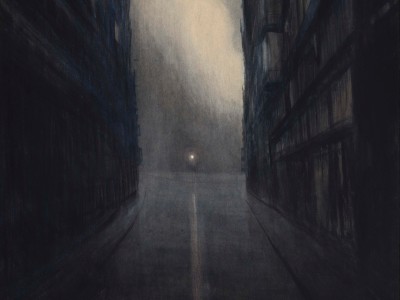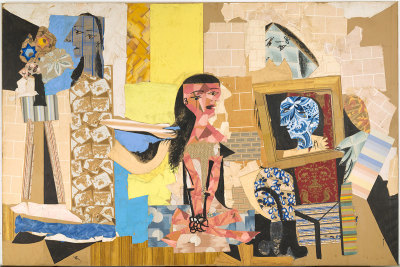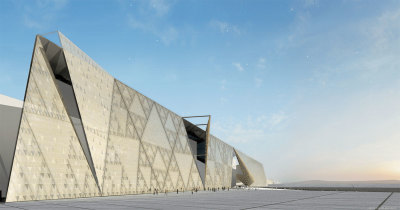Dora Maar: more than a muse
Dora Maar: more than a muse
By Dawn Adès
Published 22 November 2019
A Tate Modern survey show of the Surrealist Dora Maar reveals the artist’s questing imagination, writes Professor Dawn Adès.
-
From the Winter 2019 issue of RA Magazine, issued quarterly to Friends of the RA. Dawn Adès is Professor of the History of Art at the RA, where she curated Dalí / Duchamp (2017).
-
Artist-painter, photographer, Surrealist, political activist and Picasso’s lover. Inevitably the latter identity of Dora Maar (1907-97) has tended to swallow the rest. In so far as her own work has been recognised, it has been largely through the series of photographs documenting the metamorphoses of Guernica when Picasso was working on it in his studio on the rue des Grands-Augustins between May and June 1937.
How far the photographic character of Guernica may be linked to Picasso’s new relationship with the young photographer is worth pondering; that the series involved complex creative collaboration to a surprising degree is brought out by the retrospective of Maar’s work at Tate Modern, while the RA’s Picasso and Paper show includes photograms the pair made together during their relationship. But significant as the years with Picasso were, from c.1936 to c.1946 – including the terrible time of the Occupation of Paris – not least regarding her later career as a painter, this exhibition reveals for the first time the depth and variety of her long productive life, in which she never ceased to experiment with medium and subject. After the break with Picasso she concentrated on painting, but even into the 1980s she returned sometimes to photography, working the surface of the negative or creating arresting photograms.
Having studied at the Union centrale des arts décoratifs de Paris from 1923 to 1926, Maar went on to the Académie Julian, then the atelier of painter André Lhote, and finally to the Ecole de photographie de la ville de Paris, which indicates that she had decided on photography rather than painting as her future. In 1931 she opened a studio with the film designer and Editor of Revue du cinéma Pierre Kéfer, developing close links with the fashion world. In the 1930s her photographs and photomontages became known in cultural circles that interestingly overlapped: the boundaries between fashion, advertising and avant-garde art were quite fluid, as the new and the modern found common expression through photography. One of her most haunting images, the combination photograph in which a cobweb was superimposed on the beautiful face of her friend Nusch Eluard (The years lie in wait for you, c. 1935), was part of an ad campaign for an anti-ageing beauty product.
-

Dora Maar, The years lie in wait for you, c. 1935.

Dora Maar, Portrait of Ubu, 1936.

Dora Maar, Untitled (Still life with jar and cup), 1945.

Dora Maar, The Conversation, 1937.
-
By the mid 1930s she was living and working at the heart of cultural and intellectual Paris. She was politically engaged, signing the 1934 manifesto Call to the Struggle that urged action against the rise of Fascism; in 1935 she was spokesperson for the anti-fascist group Counter-Attack, founded by André Breton and Georges Bataille. Her photographs appeared in Surrealist publications as well as the proliferating lifestyle magazines, and she exhibited regularly. One of her most famous photographs, Portrait of Ubu, a mysterious close-up of an unidentified creature (possibly an armadillo), loomed high on the wall in the 1936 exhibition of Surrealist objects at the Galerie Charles Ratton in Paris, sharing an elevated position with great Oceanian masks.
Continuities between her commissioned photographs and those made in the context of Surrealism show a distinctive eye for the unusual viewpoint and the marvellous in the everyday. Her first commission was to illustrate the art historian Germain Bazin’s study of the Mont St Michel and its abbey, which was published in 1933. In one striking image a gargoyle appears huge and black in the foreground, glowering over the distant cloister of the abbey. Maar pursues a similar effect in her later photographs of the Seine. In Pont Mirabeau (c.1935), it takes a moment to recognise that the naked girl clinging to the bridge is a bronze statue, the dizzying drop to the riverbank below not imminently fatal.
Like another of her friends, Breton’s wife Jacqueline Lamba, Maar has been celebrated more as muse than as artist in her own right. Exacerbating her relative invisibility in recent decades was the fact that during her career her work was scattered across many publications, while sales after her death dispersed her paintings, photographs, drawings, sketches and documents to collections and institutions all over the world. This exhibition, which has travelled from the Centre Pompidou and tours to the Getty in LA in April, is the culmination of many years of dedicated research, and presents Maar as the wonderfully gifted, questing, imaginative and inventive artist she was.
-
Dora Maar is on at Tate Modern, London, from 20 November — 15 March 2020
-
-
Enjoyed this article?
Become a Friend to receive RA Magazine
As well as free entry to all of our exhibitions, Friends of the RA enjoy one of Britain’s most respected art magazines, delivered directly to your door. Why not join the club?

-
